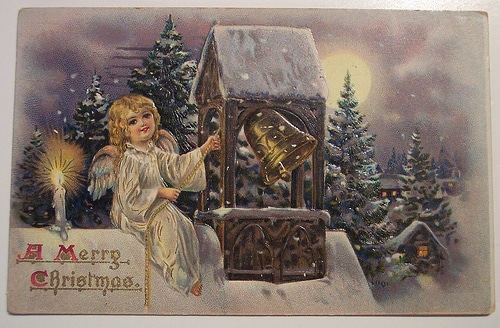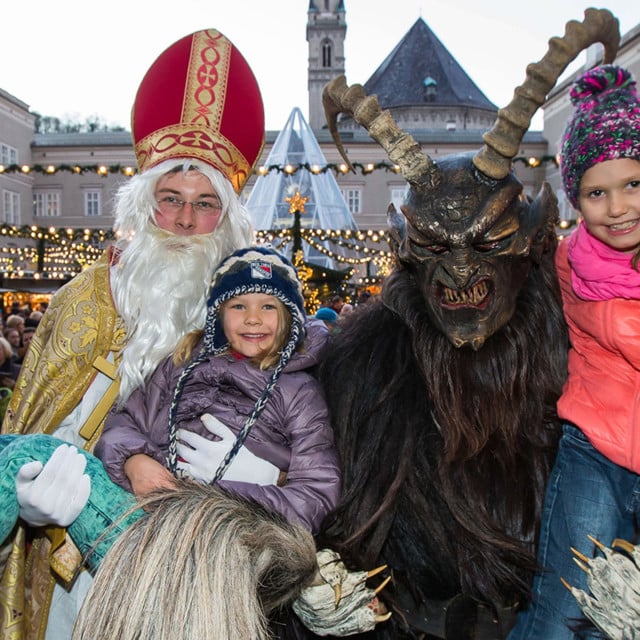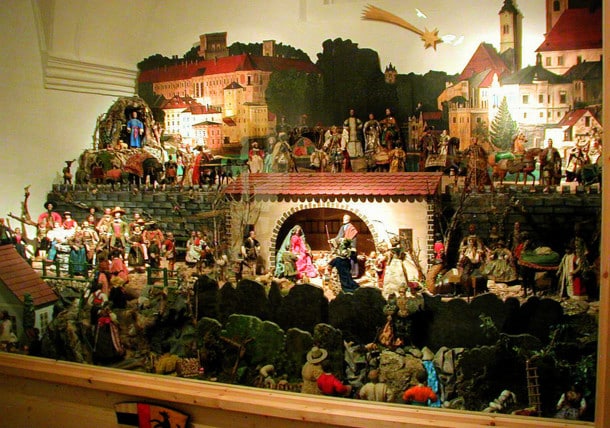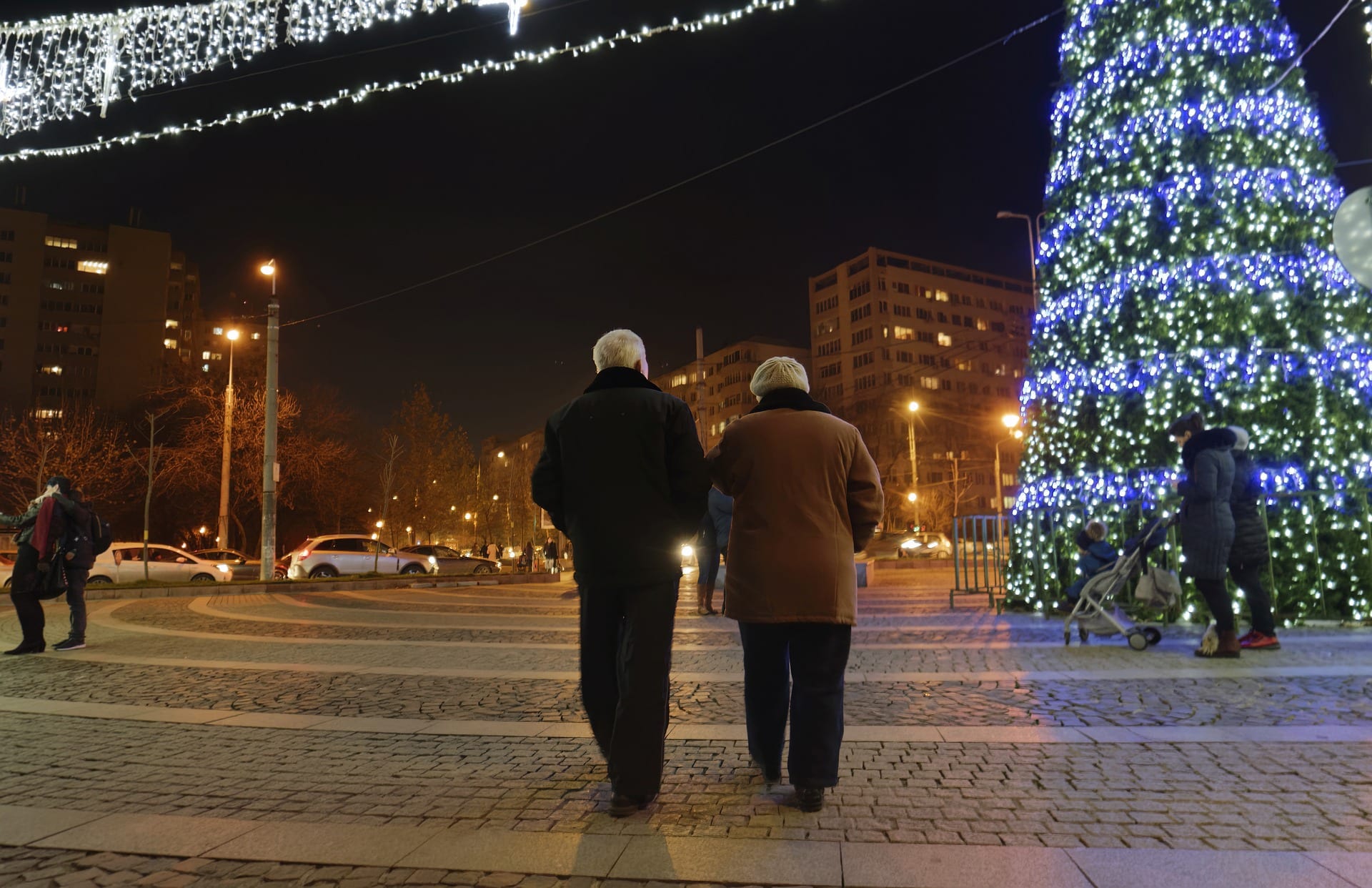Christmas in Austria has many similarities to Germany, along with its own unique Christmas traditions.

One of those unique Christmas traditions centers around the legend of Santa Claus.
Jump to:
Who is Christkind?

Santa Claus is known by many different names throughout the world. Father Christmas, Christ Kringle, etc.
In Austria, it's not Father Christmas or Santa Claus who brings the presents...It is the "Christkind" that brings the presents.
Christkind is the Christ Child, and instead of opening presents from Santa Claus on December 25, they open presents on Christmas Eve!
The Christkind is a sprite-like child, usually depicted with blond hair and angelic wings. Martin Luther intended it to be a reference to the incarnation of Jesus as an infant
A unique part of this tradition is that kids will write letters and then throw them into the fireplace in hopes that their Christmas wishes come true.
What About Santa Claus?

Does this mean that there is no recognition of Santa Claus in Austria?
Nope.
Santa Claus, often referred to as St. Nicholas, appears during Advent time. He and his companion Krampus will visit the home of the children and ask if they have been good that year. If they receive a good report, then they will reward them with candy, peanuts, and tangerines.
If they receive a naughty report, then those children may receive a stern warning in hopes that they will be good the following year.
Who is Krampus?
Think of Krampus as St. Nicholas's backup who chides the children who have been naughty.
Krampus also has a day called Krampus Day, when people dress up in scary costumes and enjoy various parties. This takes place on December 5 and is similar to the American holiday of Halloween.
Celebration Of The Birth Of Christ

Christmas in Austria also has a unique tradition in the way they handle Nativity Scenes.
Every year, farmers and nativity scene carvers display their creations to the public. This display goes from December 24 - February 2.
February 2 is special in that it is Candlemas Day, which is the ritual purification of Mary 40 days after the Birth of Jesus.
The celebration has an interesting history. This description comes from Austria.info:
The tradition of handmade cribs and their private exhibition in the Salzkammergut region originated with a 1782 ordinance by Emperor Joseph II forbidding churches to set up their – often very ornate – nativity scenes. This encouraged skilled craftsmen to build their own nativity scenes and figurines and display them at their homes instead. This, in turn, led to the development of elaborate “landscape nativity scenes” – very large and intricate scenes.
The Christmas Celebration

As one may think, although there is an extended period to view various displays, Christmas in Austria is primarily celebrated on Christmas Eve.
One of the primary traditions is the Christmas Tree and the role it plays in every town.
Every town sets up their own Christmas Tree and decorates it with many of Christmas colors, such as gold and silver.
They make the Christmas star out of straw, chocolate, and candy wrapped in tinfoil. It is quite the display!
At 6 p.m. on Christmas Eve, the town shuts down. There are no movies, restaurants, or department stores open. The streets are empty, and each home is full of families celebrating the holiday.
Then, at 7 PM, the tree is lit for the first time, and family and friends gather around to enjoy Christmas Carols.
The most popular song that is sang is Silent Night, which is a song that is native to Austria and was performed first in 1818.
